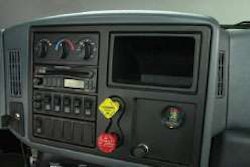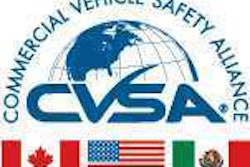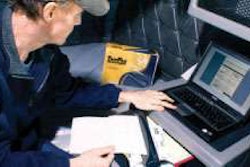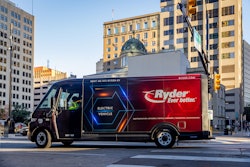EPA adopts interim guidance on tractors, components
The U.S. Environmental Protection Agency’s SmartWay program has adopted interim requirements for manufacturers to certify SmartWay technologies and an interim test method that can be used to quantify the fuel consumption impact of fuel-saving equipment and components for the purpose of determining SmartWay eligibility. SmartWay officials are developing a more comprehensive testing protocol to be issued at a later date.
While the protocol is intended for use by truck and trailer manufacturers and component suppliers, fleet owners, too, could use it as an alternative to the Joint TMC/SAE J1321 Type II fuel consumption test procedure. For more information, go to www.epa.gov/smartway.
EPA SmartWay’s interim test protocol
SmartWay modified the TMC/SAE J1321 Type II fuel consumption protocol by adding the following provisions:
• The test must be conducted on a test track, not a roadway;
• The test track length must be greater than 1.5 miles, and 5 miles is recommended;
• Track must be circular, figure 8 or oval in shape;
• Track surface must be completely dry and well-maintained, with a surface typical of highway surfaces (asphalt or cement);
• Grade change on test track not greater than 2 degrees;
• Altitude of test facility not greater than 4,000 feet above sea level;
• No precipitation on the test track during test;
• Ambient air temperatures at the test track must be between 5 degrees Celsius to 35 C (41 Fahrenheit to 95 F) provided that the air temperature during the entire test does not fluctuate more than 16.6 C (30 degrees F);
• Wind speed at the test track cannot exceed 12 mph for duration of test;
• Wind gusts at the test track cannot exceed 15 mph for duration of test;
• Top speed of test drive cycle not to exceed 65 mph;
• Test trailer configuration must be a typical dry box semi-trailer, 53 feet long, 102 inches wide and 13 feet 6 inches high;
• Trailers must be the same model and similar age, mileage and condition;
• Each trailer must have the same test payload. The combined weight of the trailer and payload must be about 46,000 pounds, plus or minus 500 pounds;
• Test payload must be loaded over axle to be consistent with federal bridge laws. Payload must be secured so it does not shift during the test;
• Tires must be inflated to manufacturer-recommended maximum cold inflation pressure prior to start of test;
• Tires must be as similar as possible in size and condition, and have accumulated at least 500 miles wear-in prior to start of test;
• The tractor-trailer gap must be as similar as possible on both pairs of trucks, as measured from the back of the tractor to the front of the trailer;
• If testing a candidate tractor against a current SmartWay tractor model for the purpose of demonstrating SmartWay eligibility, the two tractors must have substantially similar drivetrain and powertrain configuration, including gear ratio, engine horsepower and size, transmission type, lubricant type, rear axle ratio, accumulated mileage, emissions aftertreatment system, etc.;
• If testing trailer modifications or trailer aerodynamic equipment, test tractors must be equipped with features typical of linehaul combination trucks – e.g., high roof fairing, side cab extender fairings and aerodynamic profile;
• EPA must review and approve the test plan and the vehicle configurations prior to testing; and
• EPA reserves the right to review all test data and to reject any test it determines was not conducted in accordance with these provisions and/or SAE J1321, or otherwise not credible according to good engineering judgment.










